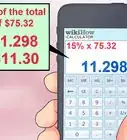This article was co-authored by David Jia. David Jia is an Academic Tutor and the Founder of LA Math Tutoring, a private tutoring company based in Los Angeles, California. With over 10 years of teaching experience, David works with students of all ages and grades in various subjects, as well as college admissions counseling and test preparation for the SAT, ACT, ISEE, and more. After attaining a perfect 800 math score and a 690 English score on the SAT, David was awarded the Dickinson Scholarship from the University of Miami, where he graduated with a Bachelor’s degree in Business Administration. Additionally, David has worked as an instructor for online videos for textbook companies such as Larson Texts, Big Ideas Learning, and Big Ideas Math.
There are 9 references cited in this article, which can be found at the bottom of the page.
This article has been viewed 86,199 times.
To subtract a percent from a percent, simply ignore the percent sign and subtract the numbers as if they were whole numbers. The result will be a difference in percentage points. These problems involve basic mathematical operations and are simple to solve.
Converting to a Fraction
-
1Understand a percentage as a fraction, as a number out of 100. So convert a percentage to a fraction, place the percent in the numerator, and 100 in the denominator.[1]
- For example, is the same as .
-
2Subtract the numerators. When subtracting fractions that have the same denominator, you simply subtract the numerators, then place the difference over the original denominator.[2]
- For example, since , you know that .
-
3Do NOT simplify. A percent is a number out of 100.[3] To convert the fraction back to a percent, simply take the numerator and label it as a percent.
- For example, converted to a percent is .
Converting to a Decimal
-
1Convert the percentages to decimals. To convert a percentage to a decimal, think of the percent as a whole number, then move the decimal point two places to the left.[4] Remember that, even though a whole number does not show a decimal point, one is understood to the right of the number in the ones place (for example 66 = 66.00).
- For example, is the same as (or 68 hundredths minus 95 thousandths).
-
2Subtract the decimals. You can use a calculator to do this quickly. You can also do it by hand. Set up the problem vertically. Align the decimal points in each number, then subtract as usual. Drop the decimal point down into your answer.
- For example:
- For example:
-
3Convert back into a percentage. To do this, move the decimal place back two places to the right. Take this answer and label it as a percent.
- For example, to convert to a percent, move the decimal place two places to the right: . So,
-
4Alternatively, subtract them directly. For example:
Calculating Negative Percentages
-
1Anticipate a negative difference. Any time you subtract a larger percentage from a smaller percentage, the difference will be negative. These situations require additional steps when subtracting.
- For example, you might need to subtract 123.688% from 50%. Since 123.688 is larger than 50, your answer will be negative.
-
2
-
3Subtract as you normally would. Borrow from larger place values when necessary. You should end up with a positive number.
- For example:
- For example:
-
4Add a negative sign to the difference. If you visualize a number line, you should see that the difference is the absolute distance between the two numbers. However, since in the original problem you begin with a smaller number and subtract a larger number, you would move left on the number line, past zero, and thus end up with a negative number.
- Thus, .
-
5Alternatively, subtract them directly. For example:
Subtracting a Percentage from a Whole
-
1Assess what the problem is. You are likely being asked to take a percentage discount off of a price or value. For example, you might be asked what 30% off 120 dollars is.[7]
-
2Convert the percentage to a decimal. To do this, remove the percentage sign and think of the percent as a whole number. Then, move the decimal point two places to the left.[8] Sometimes the percent will have a decimal already (such as in 7.5%). If there is no decimal, remember that a whole number always has an understood decimal to the right of the ones place (such as 75 = 75.00).
- For example, converted to a decimal is .
-
3Multiply the decimal by the whole value. You can multiply be a calculator, or by hand. If multiplying by hand, set up the problem like a regular multiplication problem. Multiply the numbers as usual. Your final answer should have two places to the right of its decimal point. For more information on how to multiply decimals, read Multiply Decimals.[9]
- For example,
-
4Subtract the product from the whole value. The difference is the result of subtracting the percent of a value from the whole value.[10]
- For example, . So, .
-
5Alternatively, realize that a 30% discount means the price or value will represent the difference:[11]
- =
- The price will be 70% of the original price, so simply find 70% of $120 -- using the decimal equivalent 70% = 0.70 multiply the original price -- to get the discounted price.
- For example,
Community Q&A
-
Question100 - 10% = 90, but 90 + 10% = 99. How is this possible?
 Community AnswerIf you take 90 and divide by 10, you get 9. Therefore, ten percent of 90 plus 90 is equal to 90 + 9, which equals 99.
Community AnswerIf you take 90 and divide by 10, you get 9. Therefore, ten percent of 90 plus 90 is equal to 90 + 9, which equals 99. -
QuestionA company manufactured 6,435 bars of soap. If it sold 20% of its bars of soap, how many bars of soap did it sell?
 DonaganTop AnswererMultiply the total number of bars by 0.2, or you could divide the total bars by 5.
DonaganTop AnswererMultiply the total number of bars by 0.2, or you could divide the total bars by 5. -
QuestionHow do I calculate 20% of $79?
 DonaganTop AnswererMultiply $79 by 0.20.
DonaganTop AnswererMultiply $79 by 0.20.
References
- ↑ https://www.mathsisfun.com/converting-percents-fractions.html
- ↑ https://www.khanacademy.org/math/arithmetic-home/arith-review-fractions/adding-subtracting-frac/v/subtracting-fractions
- ↑ http://www.coolmath.com/prealgebra/03-percents/01-percents-what-is-a-percent-01
- ↑ https://www.mathsisfun.com/converting-percents-decimals.html
- ↑ https://www.mathsisfun.com/definitions/minuend.html
- ↑ https://www.mathsisfun.com/numbers/percentage-change.html
- ↑ https://www.omnicalculator.com/finance/percent-off
- ↑ https://www.mathsisfun.com/converting-percents-decimals.html
- ↑ https://www.omnicalculator.com/finance/percent-off
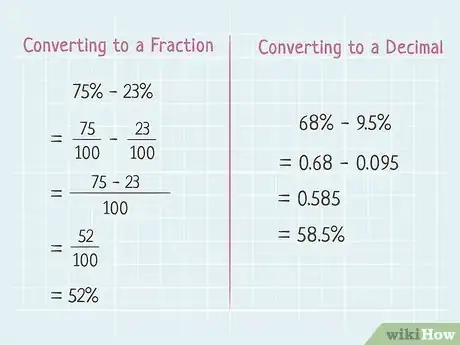



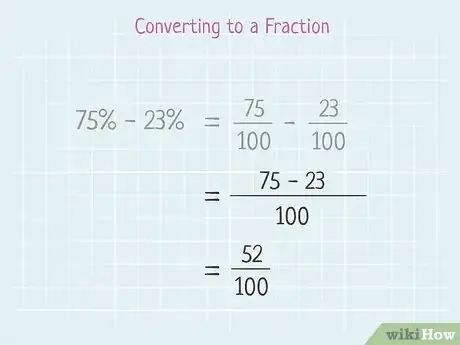








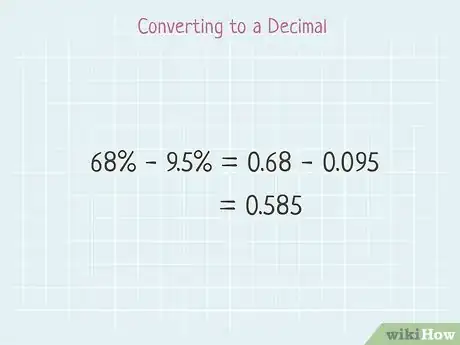







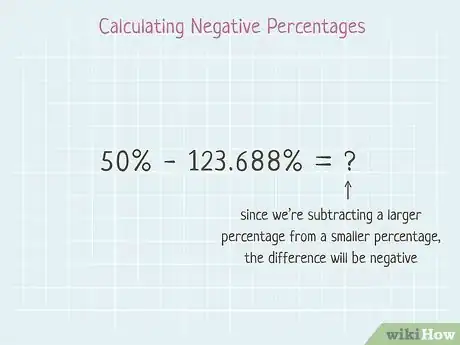



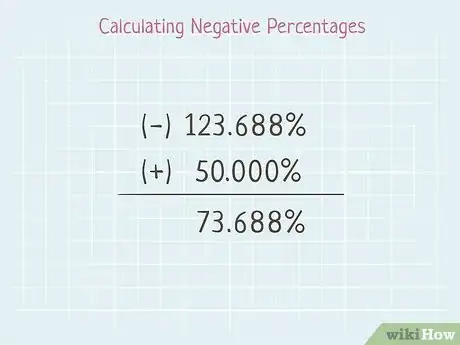











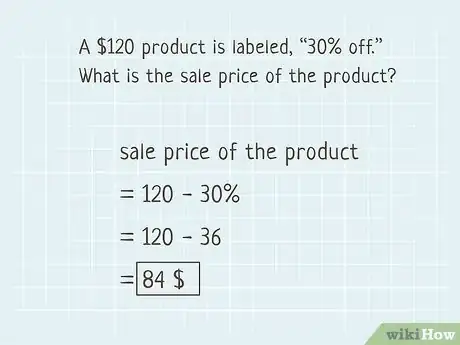






-Step-10-Version-2.webp)
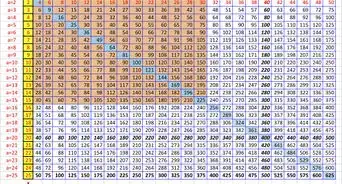

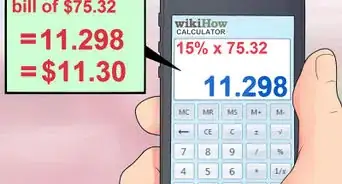
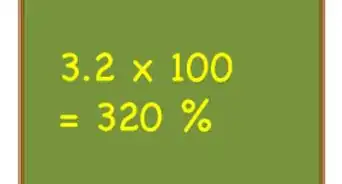

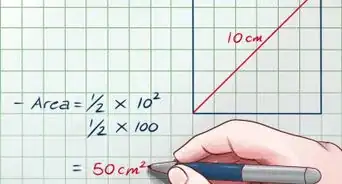














-Step-10-Version-2.webp)


